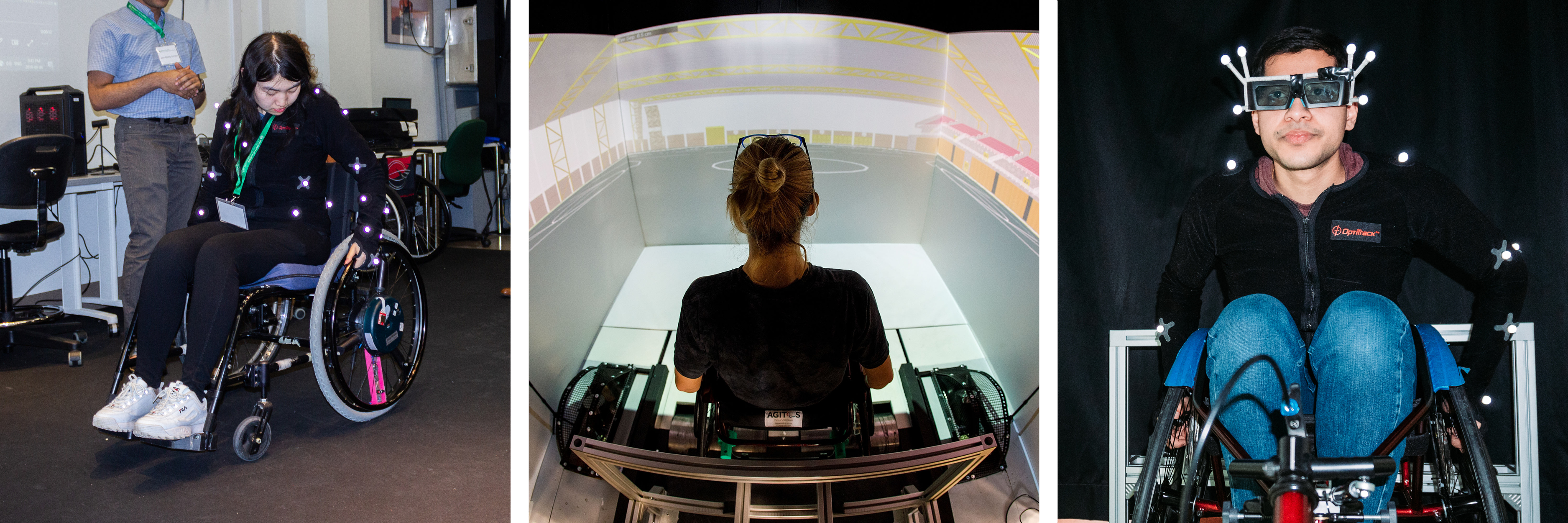Inclusive Communities
Globally, an estimated sixty-five million people require daily use of a wheelchair. Racial and gender diversity are growing in our university, and in our communities. Health research is increasingly including community members, patients, and family members in project planning and execution. It's clear that inclusion and access are becoming more and more of a priority in our academic world. So how do we as research labs keep pace?
We keep an open mind.
Keep reading to learn about our efforts to support the wheelchair user community, patient partnership in research, sex and gender based analysis, and Indigenous support.
Wheelchair Biomechanics
Millions of people with disabilities worldwide use wheelchairs as a primary mode of transport, but pain and fatigue can be a major barrier, in addition to other barriers like infrastructure (think: no ramp, steep hills, unshoveled snow on sidewalks) and social attitudes (think: assumptions about capability, tokenism, infantalization). Tackling these issues takes a double-sided approach: social change and scientific understanding. Our team works to advocate for accessibility measures on and off campus, including through one of our startups, ClickNPush Accessibility. On the science side, understanding more about the biomechanics of wheelchair propulsion can help with better wheelchair design, better pushing styles, and better supportive add-ons that all combine to reduce injury, stress, and pain.
Patient Partnership
Patient-Oriented Research, Patient Partnership, and Patient Participation are all new(ish) terms to the research world that essentially mean that we want to involve people outside of research and academia in research projects - and not just as research subjects! People with lived experience are vital to research, particularly in health research, because we aren't always focusing on the real problems people struggle with if we don't listen to them!
If you're interested in learning more about Patient-Oriented Research, check out the Alberta SPOR Support Unit, and their course on integrating POR across research areas!
Sex and Gender Based Analysis (SGBA+)
It's no secret that the vast majority of health research has traditionally been conducted on cisgender white males, and this has led to all sorts of mistakes in health care. Even though many of the research we undertake here at the Rehab Robotics Lab is Pilot Research (small scale exploratory research), we take sex and gender variables very seriously and are working to improve our understanding of the impacts, social and scientific, that sex and gender have on human participant research.
Interested in learning more? The Canadian Institute for Health Research (CIHR) has an excellent SGBA+ course to get you started!
Indigenous Engagement
A majority of our Virtual Care work has the potential to support Indigenous communities both on and off reserve. We will provide updates and resources as we navigate engaging Indigenous research partners in a respectful, appropriate manner.
